Bites and Stings
Animal or Human Bites
At least 10% of animal bite wounds need stitching, and about 1–2% require hospitalization; hence, medical attention is recommended.
Dog bites are likely to be caused by an animal that is known to the person. Most dog bites are located on the head and neck, accounting for about 60–70% of attacks in children below 5 years old.

Dog bite injuries occur most commonly at the head and neck.
Cats, on the other hand, usually cause wounds with their claws as well as their teeth.
Most human bites are often not deeply penetrating but can be associated with soft tissue injuries and hand fractures, even if they do not break the skin.
All bite wounds that have broken the skin carry a risk of infection, but the risk from human bites is high due to the many different types and the large number of bacteria carried in human saliva and their ability to live in that host.5 However, the numbers point to cat bites as more of a concern. Out of the 10–20% of bites that become infected, 20–25% are human bite wounds, 30–50% are cat bites, and 5–25% are dog bites.6
The predominant pathogens that can cause infection in these bites depend upon the origin of the bite (animal or human). Signs and symptoms of bite wound infections include:
- Fever
- Redness
- Swelling
- Tenderness
- Purulent discharge and enlarged lymph nodes near the site of the wound
Bite wound infections can cause more serious complications such as subcutaneous abscess, osteomyelitis, septic arthritis, tendonitis, and bacteremia.
The first aid response to a person with a minor bite wound is to:
- Wash the wound with soap and water, making sure to irrigate it well. A syringe can be used if available.
- Air it dry, apply antibiotic ointment, cover the wound with sterile gauze.
If the wound is deep and actively bleeding, responders should:
- Apply pressure to the wound to stop the bleeding first.
- Bunch up some sterile gauze and apply a pressure dressing to help control the bleeding. If the bleeding is spurting, then a major blood vessel may be involved.
- Clean the wound as described and apply antibiotic ointment.
- Bring the person to the emergency department after the wound has stabilized. Some bite wounds need to be debrided. Rabies prophylaxis and tetanus vaccine may be necessary for prevention.
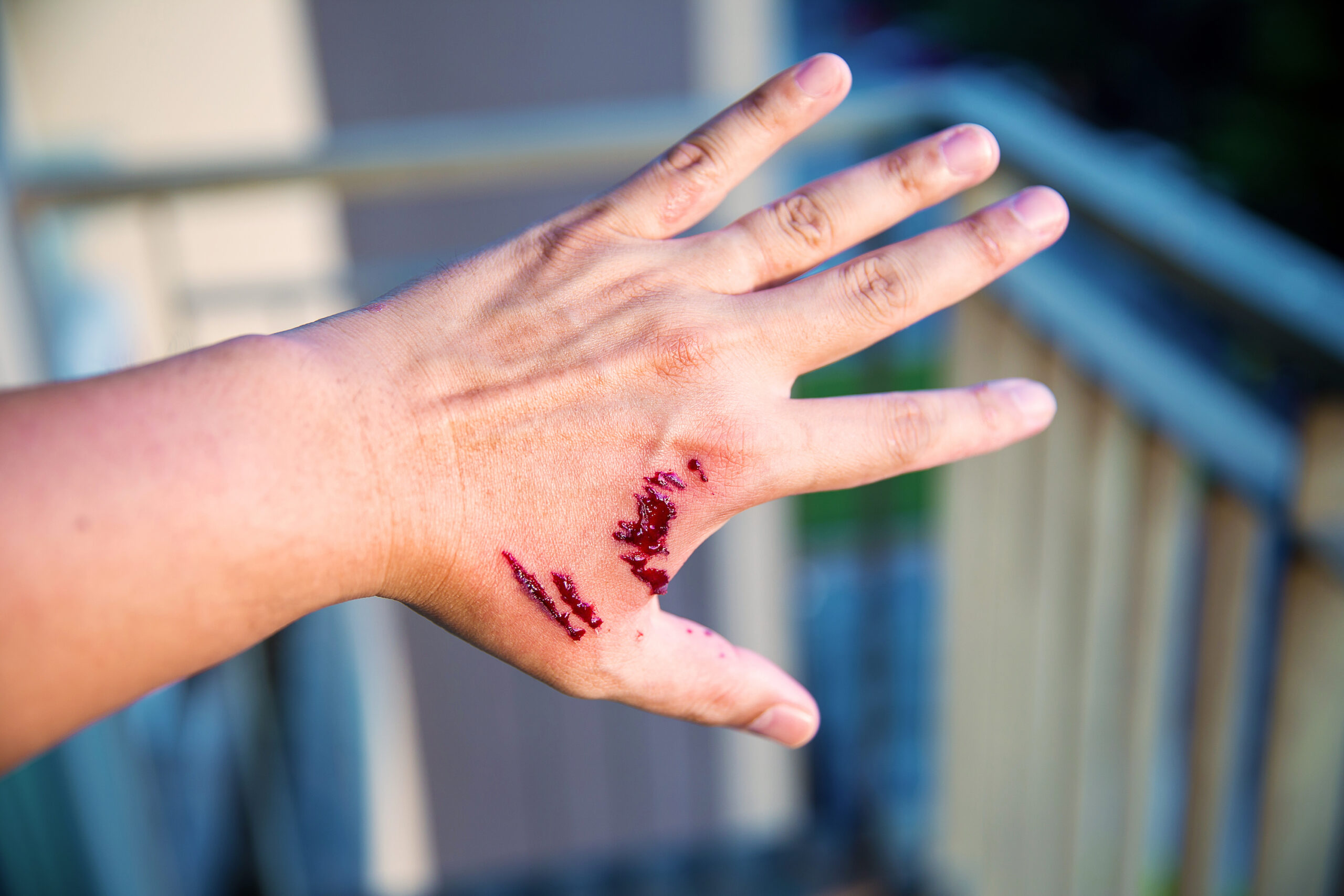
Dog Bite Wound
Healthcare institutions or animal bite centers may require observation of the animal for 1 to 2 weeks for signs of rabies infection. The animal should be isolated during this time.
Insect Bite
Insect bites can be a minor nuisance or cause a serious medical condition such as the transmission of insect-borne illnesses and allergic reactions. Common arthropods that bite humans are mosquitoes, ticks, fleas, kissing bugs, bed bugs, blackflies, sandflies, chiggers, biting midges, and some types of small spiders.
Insect bites are different from stings in that there is no injection of venom involved in insect bites. However, some insect bites are avenues for infectious diseases.
Types of Reactions
Local Reactions
Insect bites can cause local reactions, papular urticaria, or systemic allergic reactions. A local reaction is an inflammatory response located at the site of the bite, which appears immediately and consists of local redness and swelling. These symptoms should subside within a few hours. Insect saliva has chemicals that cause this reaction, such as anticoagulants, enzymes, agglutinins, and mucopolysaccharides.
Treatment of these local reactions includes:
- Washing the affected area with soap and water.
- Using a cold pack to help the inflammation subside.
- Using topical creams such as calamine lotion, diphenhydramine, or pramoxine to help decrease itching (pruritus).
- Using an over-the-counter antihistamine such as cetirizine or loratadine to help severe itching.
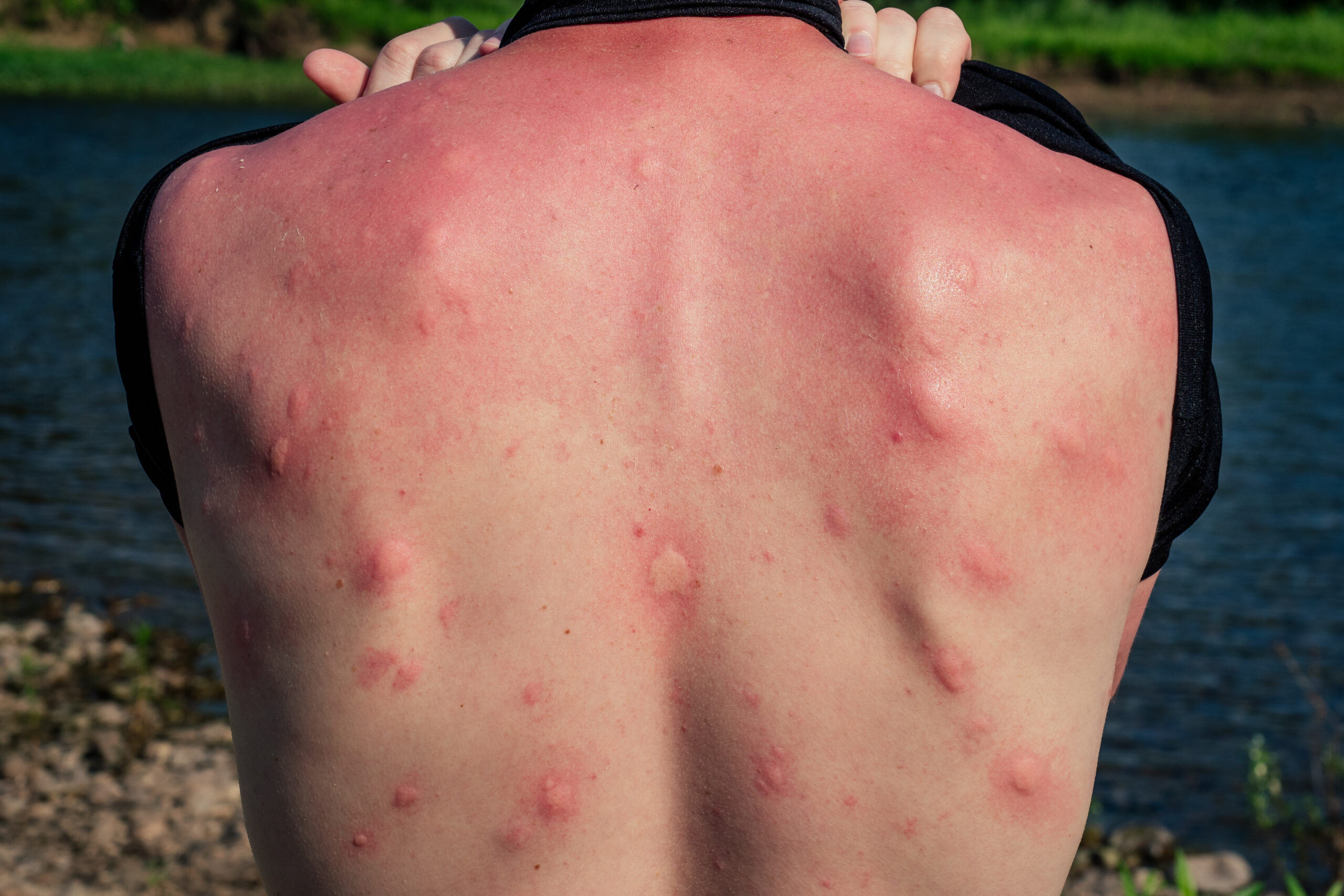
Papular Urticaria from Insect Bites
Papular Urticaria
A hypersensitivity to insect bites such as fleas, mosquitoes, or bedbugs may lead to papular urticaria. These are itchy, raised lesions, predominantly seen in children ages 2 to 10 years old. They can sometimes recur for years. This condition is usually clinically diagnosed, and the treatment usually consists of nonsedating antihistamines such as cetirizine and loratadine.
Systemic Allergic Reactions
Some people are susceptible to insect bites that cause reactions precipitated by inflammatory cells such as mast cells. Anaphylaxis is a potentially deadly systemic allergic reaction that will be discussed in detail in the next section.
Tick Bites
Ticks are commonly found in the grass and on shrubs. They wait until they can attach themselves to people. Some types of ticks can spread diseases such as Rocky Mountain spotted fever, Lyme disease, and many others.
If someone has been bitten by a tick, instructions for the responder to remove it are as follows:
- Use a tweezer to grasp the tick as close to the skin as possible.
- Using steady pressure, pull on the tick firmly and slowly without twisting or jerking it out.
- If any part of the tick remains under the skin, it should be left there to avoid any trauma to the area, and the body will expel it on its own.
- The skin should then be washed with soap and water.
- Seek medical help if unable to remove the tick.
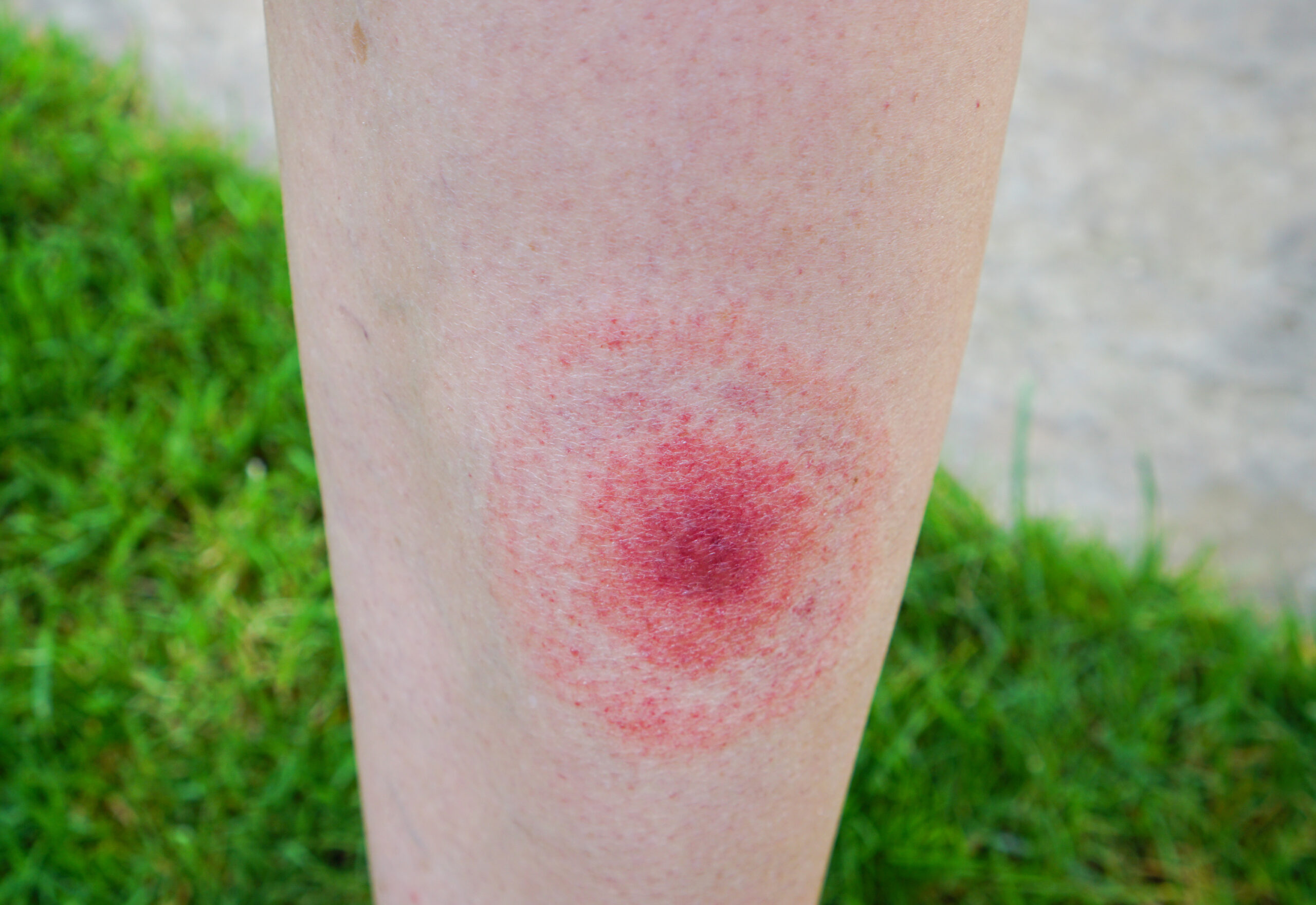
Some ticks cause Lyme disease and bulls-eye rash.
Stings
When there is a sting, there’s venom. Toxins in the venom can cause the area to swell, turn red, and feel hot. Some stings can be very painful.
For a person who has been stung by an insect, responders should perform the following:
- Remove the stinger (in the case of a bee or wasp sting).
- Wash the area around the sting with soap and cool water.
- Place a cold compress or a damp washcloth on the affected area.
- Later, when the area is dry, topical creams such as calamine lotion may be applied to help with the itchiness.
- Over-the-counter antihistamines can be used for the itch if it continues to be bothersome, especially to keep the person from scratching the skin raw and predisposing it to infection.
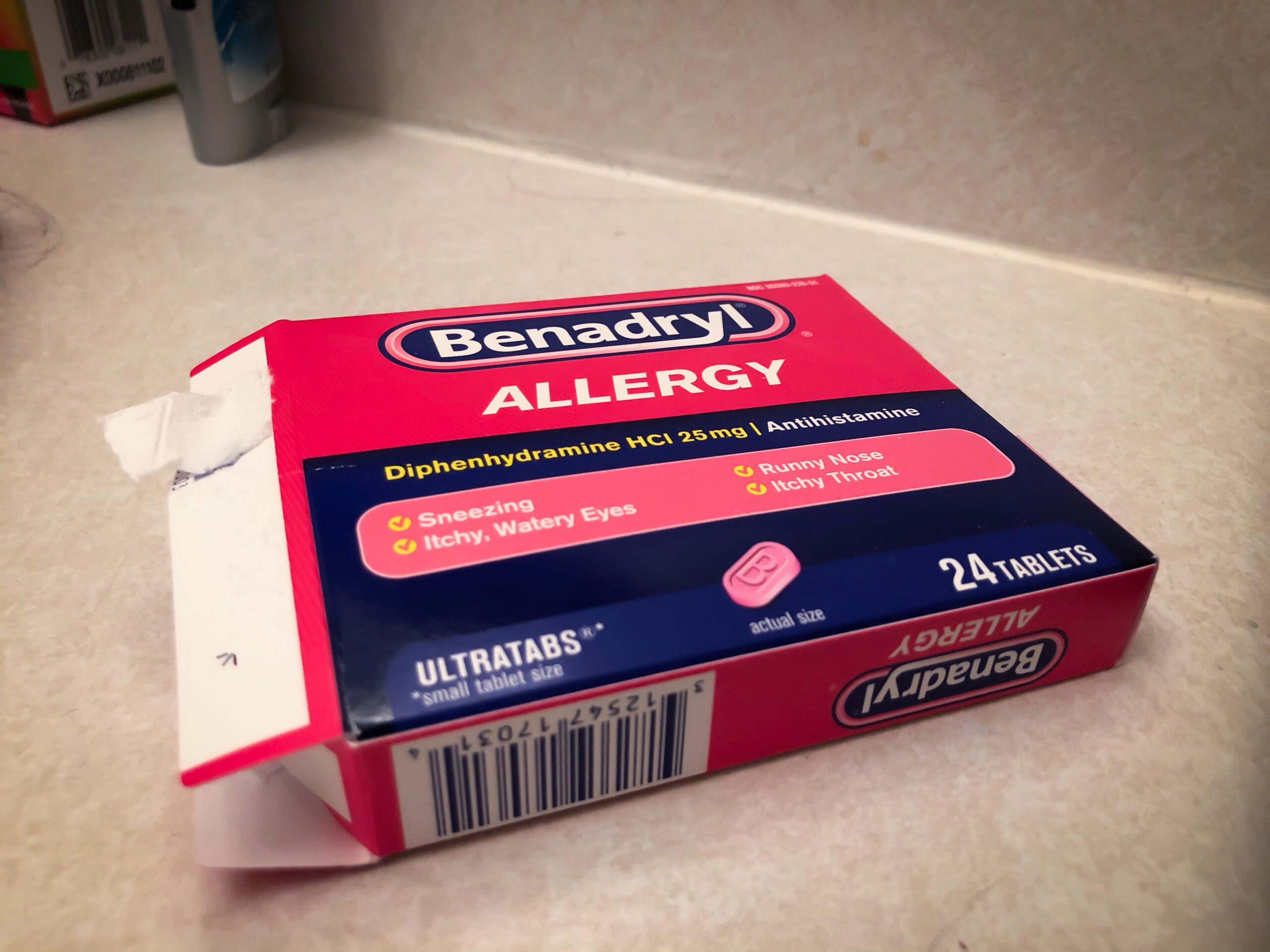
Over-the-Counter Antihistamine
The sting site’s local reaction can increase in size up to 4 inches over 1 to 2 days. The swelling and pain from stings should improve in about 5 to 10 days. About 10% of people who are stung develop a hypersensitivity reaction.
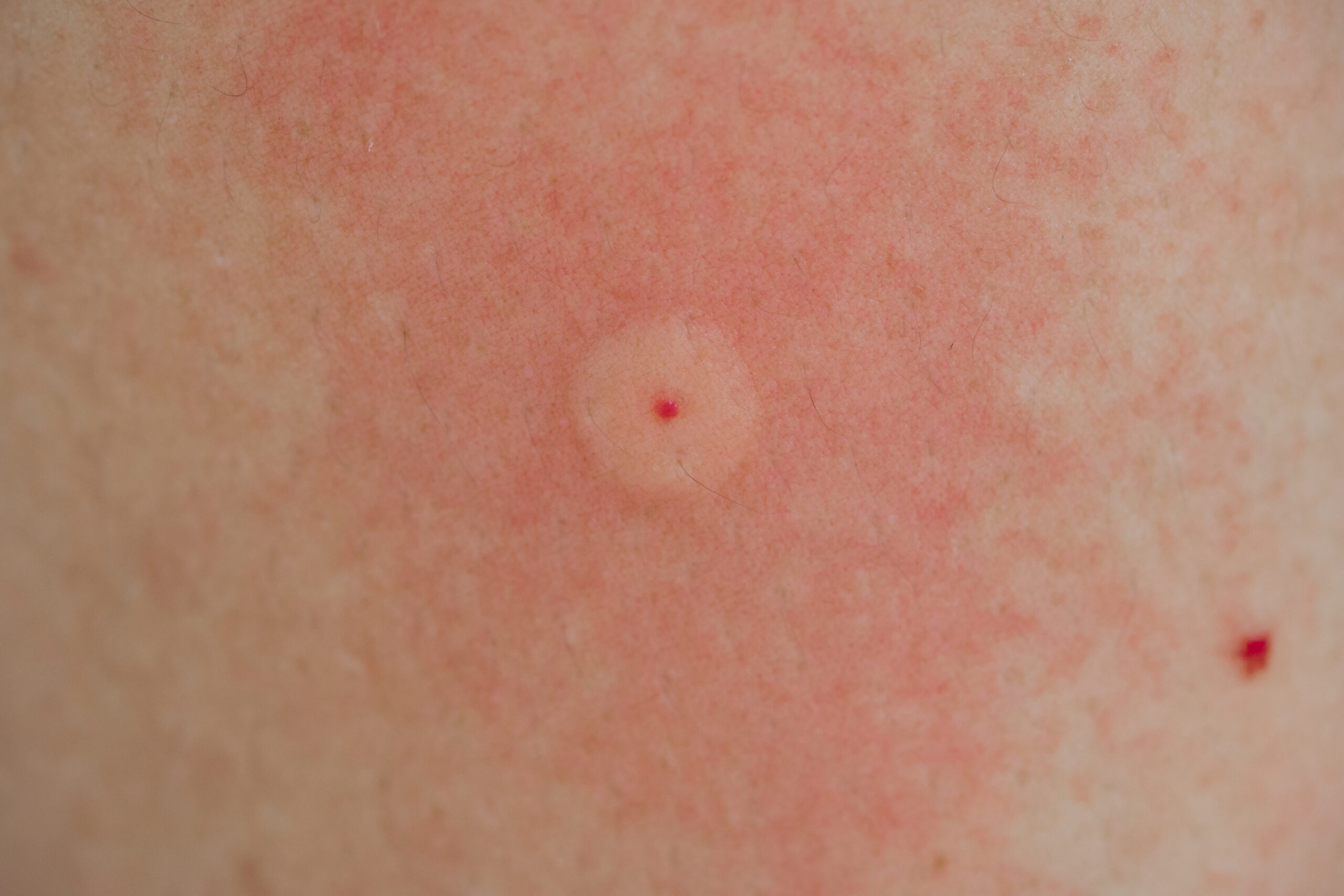
Bee Sting With Localized Skin Reaction
A person having a severe allergic reaction to a sting will present with hives, redness, or swelling, even in areas that are not part of the sting. They may complain of belly cramps, nausea, vomiting, or diarrhea. They can also present with difficulty breathing, hoarseness, light-headedness, and even loss of consciousness. These are signs of anaphylaxis, a systemic response that will be discussed in further detail in the next section.
Snake Bites
Venomous snakes are located worldwide, particularly in South and Southeast Asia, sub-Saharan Africa, and Latin America. The initial first aid for any snake envenomation is concentrated in delaying the distribution of the venom and quick transfer of the patient to a snake bite health center.
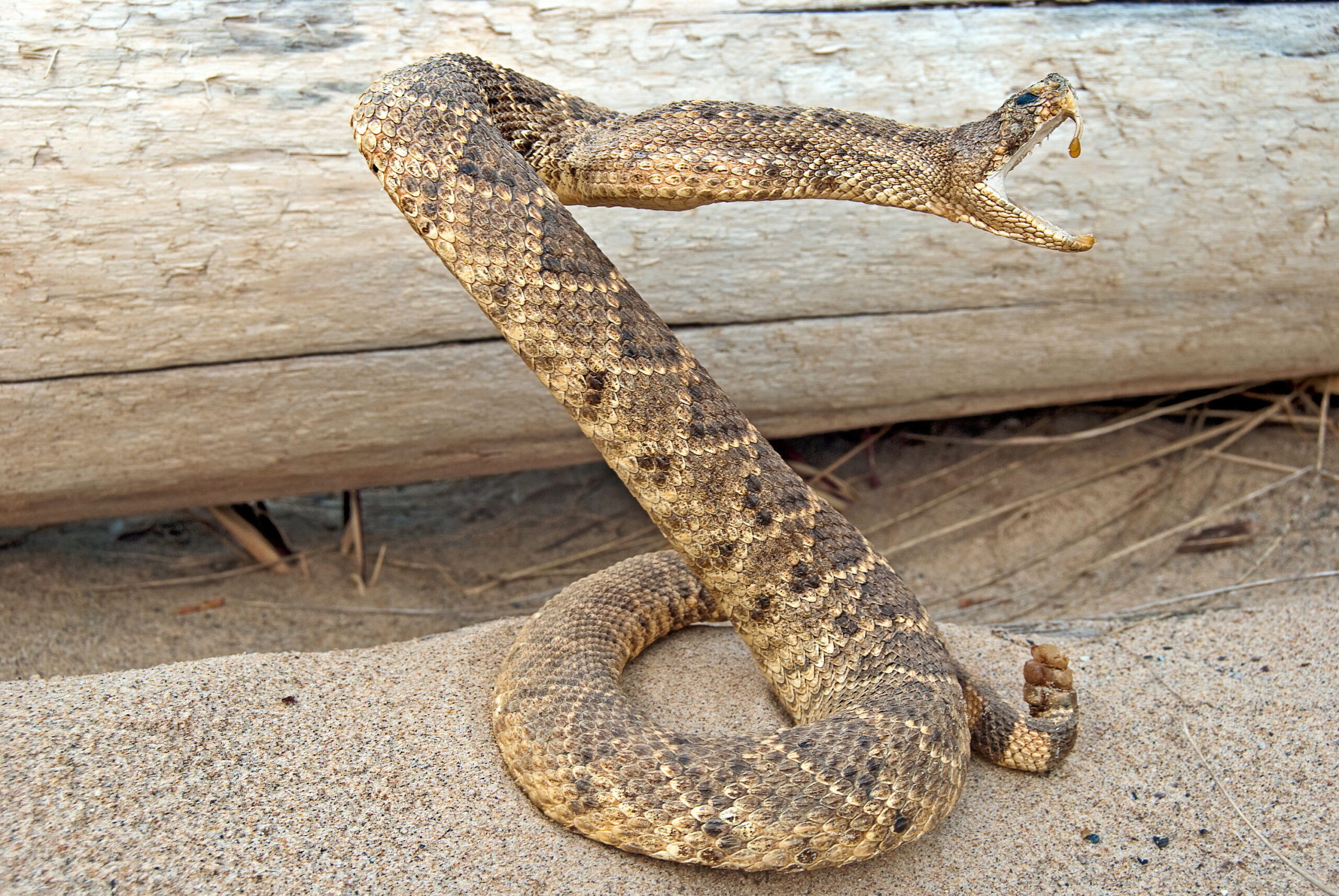
A Snake Ready to Strike
The first responder must remain calm and do the following:
- Carefully remove the person with a snakebite from the area where it occurred to prevent any further danger to them or the rescuer.
- If it is safe, attempt to identify the kind of snake that has bitten the person. A digital photo of the snake can be taken from a distance. If it takes too long, opt to immediately transfer the patient to the snake bite center.
- Avoid handling any snake parts. Sometimes there will be snake parts around the vicinity, especially if someone has hacked at the snake to try and kill it. The biting reflex can still be evident even if the snake has been mortally wounded or severed.
- Remove any jewelry on the affected extremity, as it will usually begin to swell. Articles of clothing such as a boot or shoe can also be removed if they occlude blood circulation.
- Position the person’s limbs relative to their heart. Recommendations vary and depend on the effect of the venom.
- If the venom is causing significant local tissue damage with less systemic effects, the limb can be positioned at the level of the heart to manage local swelling while delaying systemic absorption.
- If the venom seems to be causing systemic effects such as neurotoxicity, place the affected limb below the heart level.
- Attempt to immobilize the injured extremity.
- When applying a splint to the lower extremity, apply it posteriorly with the limb extended to immobilize the ankle and knee. If the bite is in the upper extremity, use a sling.
- Do not allow the patient to walk. Exertion can help spread the snake venom systemically.
- Avoid manipulating the wound except when applying a bandage. Apply a pressure pad if needed for bleeding. Do not try to suck out the venom or cut into the wound because it tends to distribute the venom faster.
- Transport the patient immediately to the nearest snakebite center. It is a good idea to call ahead if possible with some information about the snake to receive further instructions.
5 Patil PD, Panchabhai TS, Galwankar SC. Managing human bites. J Emerg Trauma Shock. 2009;2(3):186–190.
6 Rothe K, Tsokos M, Handrick W. Animal and human bite wounds. Dtsch Arztebl Int. 2015;112(25):433–443.